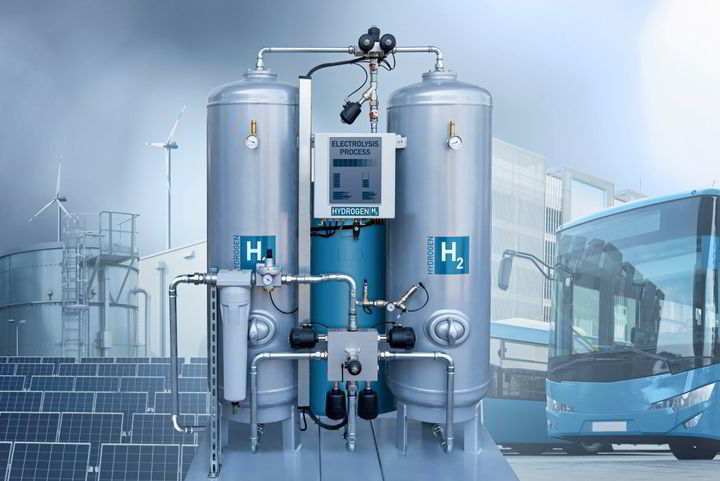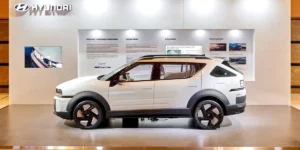Hydrogen will provide up to 26% of EU’s final energy demand in 2050, but is unlikely to be used in cars or heating: study

Electricity-based hydrogen will play a vital role in decarbonising Europe, but policymakers should focus on using it only in sectors where direct electrification is an unlikely option, according to a new peer-reviewed scientific study by Germany’s Potsdam Institute for Climate Impact Research.
“A computational model that considers multiple EU energy system transformation pathways has shown that the best way to achieve the EU climate neutrality target [of reaching net-zero emissions by 2050] is for policymakers to prioritise direct electrification for passenger cars and low-termperature heating, and indirect electrification via hydrogen and synthetic fuels for aviation, shipping, chemical industry, and electricity storage,” the researchers write.
“We find that, across [our six] scenarios, 73-78% of the final energy in the EU27 is provided either by electricity or electricity-based hydrogen and synthetic fuels in 2050.
“Direct electricity use in final energy increases from 20% in 2020 to at least 42-60% [in 2050], while 9-26% [of final energy] are provided by electricity-based hydrogen and synthetic fuels.”
The study — entitled Distinct roles of direct and indirect electrification in pathways to a renewables-dominated European energy system and published in the One Earth journal — adds that both direct and indirect electrification are “complementary” and that they will only complete in two segments — trucks and high-temperature industrial heat — that together make up up to 15% of final energy demand. Here, the EU should remain flexible about infrastructure and technology choices.
The researchers identify “three cornerstones to guide EU policy”.
Article continues below the advert
The first is to focus direct and indirect electrification on the “outlined no-regret sectors” mentioned above; the second is to remove barriers to renewable power expansion; and the third is to incentivise the scale-up of hydrogen supply chains.
Transport
The report points out that although battery-electric solutions in transport have high efficiencies, “they face limitations for long-haul applications”.
Passenger cars “switch almost entirely” to battery-electric in all scenarios — with the exceptions of the two scenarios where the EU-wide ban on new ICE (internal combustion vehicles) by 2035 is not enacted. But even here, only “some ICE cars remain” in 2050.
In long-distance aviation and shipping, batteries will not be feasible, leaving liquid fuels — fossil, bio-based or synthetic made from hydrogen — as the only options.
“A mix of residual oil-based fuels and carbon-neutral fuels (synthetic or biofuels) provides the supply of the remaining liquid transport fuel in 2050,” the study says. “The emissions from residual fossil fuels are compensated by CO2 removal to reach the GHG [greenhouse gas]-neutrality target.”
It adds: “Across our scenarios, the 2050 share of electricity in final energy [in transport] (including international aviation and shipping) is between 28% and 41% and the share of hydrogen-based carriers between 13% and 32%.”
In terms of trucking, the study comes to no firm conclusions, pointing out that it found “strong variation” across scenarios, largely depending on future battery densities and the roll-out of megawatt-scale electric-vehicle charging.
Heating
In 2050, the heating of buildings in the EU will largely be supplied by electric options — mainly heat pumps but also resistance heaters — across all scenarios.
“The share of electricity-based heat provision (in terms of useful energy) increases from 17% in 2020 to 65-92% by 2050 [depending on the scenario],” the study explains, with the remainder coming from district heating or gas (fossil, biogas or synthetic methane).
“Direct hydrogen heating is not competitive even under favourable technology conditions,” it adds. “Significant energy losses and (in the case of direct hydrogen) new grid infrastructure make hydrogen-based heating hardly attractive in comparison to electric heating.”
Industry
In heavy industry, both electric and hydrogen-based energy carriers will play an important role, the researchers write.
“We find the electricity share in final energy (including non-energy use) [in industry] to increase from 23% in 2020 to 28-47% by 2050, while the 2050 share of hydrogen-based carriers varies between 14% and 44% (9-31% share of synthetic fuels) across scenarios.
“In addition, a significant share of final energy comes in the form of biomass-based carbonaceous fuels (16-22%), which are used for energetic and feedstock purposes.”
The amount of hydrogen required for the steel sector largely depends on the scale of direct iron reduction in the EU in 2050 — ie, replacing coking coal for heating iron ore while simultaneously removing its oxygen.
And the study also points out that high-temperatures processes in sectors such as cement, glass and ceramics “pose limits to electrification as the required technologies are highly uncertain”.
But in the food, paper, machinery and non-ferrous metals sectors, low- and medium-temperature heating can easily be supplied by heat pumps or resistive heating.
“Without the availability of significant hydrogen networks close to industrial centres (as in H2 scenarios), direct hydrogen use for heating only plays a marginal role in those sectors,” the paper explains.
Total supply and demand
In 2050, the direct use of hydrogen will be between 500 and 1,800TWh a year — 15 million to 54 million tonnes — across all scenarios, largely depending on the amount needed for seasonal electricity storage (ie, converting solar power to H2 in the summer, and storing it for electricity production in the winter).
On top of this, at least 500TWh of synthetic fuels (including ammonia and methanol) will also be required by 2050 for long-distance shipping and aviation, and chemicals production (ie, non-energy).
Just to give a sense of the scale required for synthetic fuels, 500TWh of ammonia is the equivalent to 96.7 million tonnes of NH3, which would require about 17.2 million tonnes of hydrogen to produce.
A million tonnes of hydrogen a year requires about 10GW of electrolysers and 20GW of renewable power, with an investment cost of about $30bn, at today’s prices.
The study does, however, point out that it did not take into account the climate impact from hydrogen leakage — H2 itself is a potent greenhouse gas.
A “non-negligible” amount of hydrogen leakage and its impact on net-zero “would affect our results and might lead, in particular, to a smaller role of direct hydrogen use”.






